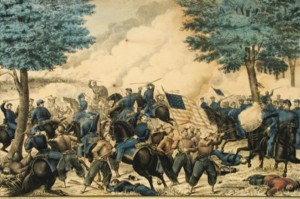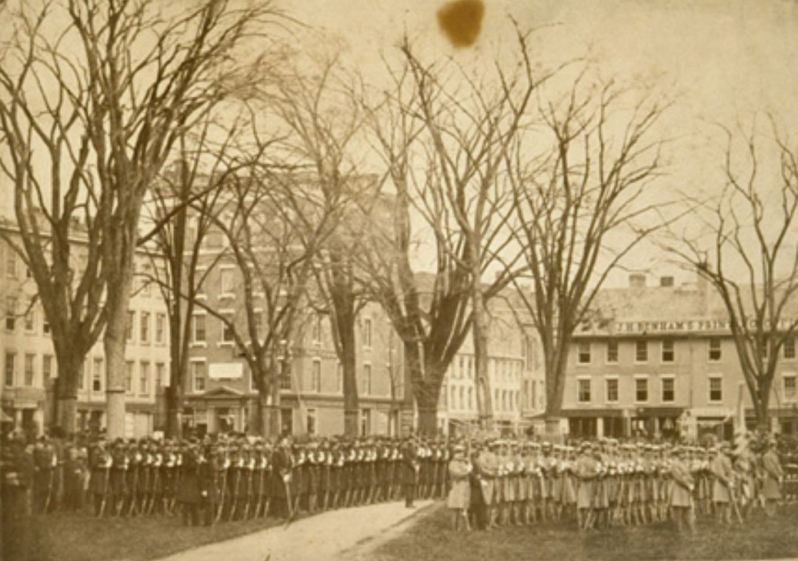By John Potter for Your Public Media
The First Battle of Bull Run was fought outside Manassas, Virginia, on July 21, 1861. It was the first major battle of the American Civil War, involving over 50,000 participants on both sides, and was a military fiasco for the North. The State of Connecticut did not suffer terribly on this particular field, but men from the state took a prominent role in the events of that critical day.
Three regiments of Connecticut volunteers had signed up to fight the Southern rebels during the spring of 1861. Their term of enlistment was just 90 days, an indication that many believed the war would not last long at all. Prominent citizens, including several graduates from the Military Academy at West Point, were elected to officer these regiments.

Battle of Bull’s Run, Va. Lithograph by E.B. & E.C. Kellogg, 1861. 1950.202.91. In this lithograph by Hartford’s Kellogg brothers, the New York Fire Zouaves charge a rebel cavalry unit – Connecticut Historical Society
The three Connecticut regiments were composed of men hailing from all corners of the state and were formed together into a brigade, along with the Second Maine Regiment, that served under Brigadier General Daniel Tyler, a West Point graduate from Brooklyn, Connecticut.
During the battle, the Connecticut men fought along Bull Run creek near the Stone Bridge, a prominent crossing of the run, but an area of the battlefield not highly contested by the Confederates. The Third Connecticut Regiment and Second Maine took part in a charge up a knoll against a Rebel battery, which was entirely successful in driving it away. As the rest of the Federal Army dissolved in panic, the relatively fresh men from Connecticut stood to the colors and did much to stem the tide of fleeing men in blue.
The day had cost Connecticut just over 50 men in casualties, and the bulk of those were taken prisoner. Only six men from Connecticut were killed in action. Despite this nominal loss, officers from throughout the Army praised the Connecticut men for their poise when the battle turned against them. A remarkable 60% or more reenlisted in 3-year regiments when their 90 days of service were up. It was the first of many feats of bravery Connecticut men would act out over the next four years of bloodshed.
John Potter holds an MA in History from Shippensburg University and was a Research Center Assistant at the Connecticut Historical Society.
© Connecticut Public Broadcasting Network and Connecticut Historical Society. All rights reserved. This article originally appeared on Your Public Media.
Note: ConnecticutHistory.org does not edit content originally published on another platform and therefore does not update any instances of outdated content or language.








